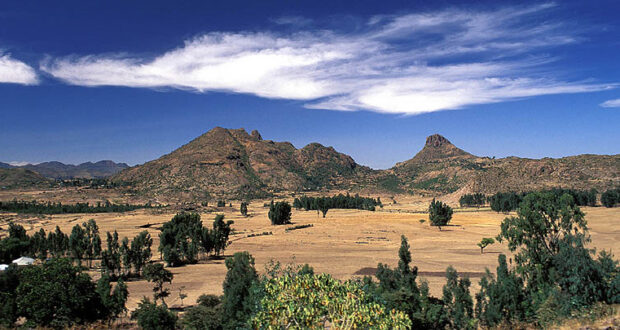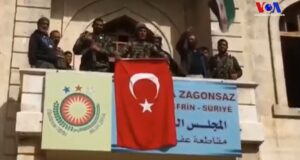6 January, 2021
By Oliver Hegglin – Research Assistant
Minority rule
Despite being an ethnic and territorial minority, making up just six per cent of the over 110 million people in the country, the Tigrayans of Ethiopia managed to control all facets of state authority incontestably for 28 years since taking power in 1991 following the Ethiopian Civil war that began in 1974. Through the Tigrayan People’s Liberation Front (TPLF), founded in 1975, the Tigrayans became the most important force in the resistance against the communist Derg regime that ethnic groups nationwide were fighting. By joining forces with these other groups, the TPLF led a coalition of four ethnic-based parties known as the Ethiopian Peoples’ Revolutionary Democratic Front (EPRDF) to control the government in 1991. However, the election of Prime Minister Abiy Ahmed in 2018 and radical changes in Ethiopia’s structure would lead to a civil conflict just two years later.
Tigrayan rise to dominance
Under the TPLF, Ethiopia became one of the “fastest growing nations this century”, with an average growth of 10.8% between 2004 and 2014, and successfully lowered mortality and banished famine. It was also able to steer international aid and loans, amounting to about USD 3.5 bn per year in foreign aid alone, and in the 1994 constitution, was able to introduce public ownership of land, giving the government access to resources in other parts of the country. In doing so, the land in other ethnic regions was leased to domestic and foreign investors, winning billions of dollars and effectively putting Ethiopia’s natural resources also under the control of the TPLF. The Endowment Fund for the Rehabilitation of Tigray (EFFORT) also brought companies under the control of this Tigrayan conglomerate.
On a social level, the TPLF intervened in selecting religious leaders throughout the country, winning social control as well. Under their rule, both patriarchs of the Ethiopian Orthodox Church, who lead over 40 million followers, were Tigrayan. They allegedly also had a hand in selecting the country’s Islamic Affairs Supreme Council. The Ethiopian Army that had won the civil war which ended in 1991 was also disbanded and replaced by the TPLFs own forces, ensuring most high-ranking military officials were Tigrayan.
Prime Minister Abiy referred to this time under TPLF rule as “years of darkness”. The authoritarian approach the TPLF had taken to improve the country also locked out the next generation of young people from participating in politics. Accusations became more widespread that the Tigrayans were dominating the political and social spheres, the military and the economy for their own benefit. Opposition figures and journalists were jailed and security forces were used to suppress anti-government protests.
Creating a national identity
In 2018, protests erupted in the Oromia and Amhara regions, home to the largest ethnic groups in the country. Both these ethnic groups together constitute over 60% of Ethiopia’s population, never having been satisfied with TPLF minority rule. Plotting for a change in national leadership, the Amhara National Democratic Movement and the Oromo People’s Democratic Organization, both members in the TPLF-led EPRDF, supported the candidacy of Abiy Ahmed for Premiership, an election he won.
Prime Minister Abiy Ahmed set about altering the fabric that had been woven by the TPLF. Shortly after the election, the three other parties in the TPLF-led EPRDF annulled the coalition and formed a single national Prosperity Party that was not organized on ethnic lines. Abiy was clear to reform the federalist structure of Ethiopia into a nationalist system. Then came planned constitutional reforms, which were a “red line” for the TPLF. These changes would redistribute power proportionate to the population, reducing the TPLF’s control. Specifically, they would remove the rights of “nations, nationalities, and peoples to self-determination, secession and establishment of their own regional state government”, establish a separate supreme court and make Addis Ababa a member state of the federation. These would be significant changes from the previous system, which had permitted the Tigrayans to hold power disproportionate to their population percentage and territorial size, power which was drastically being curbed, leaving TPLF leaders feeling targeted.
There seems to be a consensus that the main loser of the fast-paced reforms being introduced by Abiy is the TPLF. Desperate to cling to power, analysts are holding the TPLF responsible for the sharp rise in internal tensions and ethnic conflict since Abiy came to power, organized through their financial resources and security network built up over the past decades.
A continuation of politics by other means
If tensions between Prime Minister Abiy and the TPLF had been boiling since 2018, then the Corona virus pandemic caused them to spill over the top. In March 2020, Ethiopia’s national election board decided to postpone national and regional elections scheduled for August of that year due to the virus. In response, Tigrayan legislators withdrew from Parliament and on September 9, Tigray held elections in open defiance of the federal government.
The TPLF reportedly won 98.5% of the 190 regional seats, then turned around and declared the federal government illegitimate, refusing to recognize it. In response, the federal government annulled Tigray’s regional election, refused to acknowledge the outcome, and limited funds for the region. Instead, they opted to provide financial resources directly to local government to ensure basic services, effectively bypassing the TPLF. The TPLF referred to this as a declaration of war.
On November 4, Prime Minister Abiy turned to the Ethiopian military and ordered an offensive against the TPLF, after the Ethiopian army’s northern command headquarters in the Tigrayan capital Mekelle was attacked. In what he called a “law enforcement” operation, the goal was to “liberate” Tigray from the TPLF. This was a bold effort, as the TPLF was assessed to have at that point about 250,000 well-armed and experience soldiers, having led the efforts in the aforementioned Ethiopian Civil War which ended in 1991. Being in control of the Ethiopian military for nearly three decades also meant these soldiers fought much of the 1998-2000 Ethiopian-Eritrean war, and as previously mentioned, high-ranking and now experienced officers were also Tigrayan. Additionally, being on the border with Eritrea, the largest military bases, more than half of federal army soldiers and four of the six mechanized divisions, are all in Tigray. While the size of the Ethiopian National Defense Forces (ENDF) is hard to assess, considering the amount of Tigrayans within it, the estimated number is 162,000 in all functions.
With the goal of defending Mekelle, the TPLF expressed its will to arm the city’s entire population of about 500,000. Yet how many of these civilians remained in the city is unclear, as 44,000 civilians in Tigray fled to neighboring Sudan, with the United Nations estimating as many as 200,000 people could have fled in total. Meanwhile in Tigray the TPLF claimed to have “completely destroyed” the ENDF’s 21st mechanized division, a claim the federal government denied, and said that many Tigrayan fighters were surrendering prior to the exhaustion of a 72-hour ultimatum to surrender, issued before an assault on Mekelle was to take place. Unfortunately, accurate information from the conflict continues to be difficult to find and assess due to a complete government information blackout over the entire country.
This 72-hour ultimatum was issued on November 22 and expired on November 25, after which the “final phase” of the Ethiopian assault against the TPLF began. On November 28, Prime Minister Abiy declared the military operation over as federal forces had allegedly captured Mekelle. While this information too has been difficult for reporters to ascertain, the TPLF has expressed it will fight on “to the last”.
Right to self-determination
The TPLFs leader, Debretsion Gebremichael, has said that the conflict is about “defending our right to self-determination.” Where initial signs, reports and analyses have pointed towards the TPLF attempting to first maintain power on a national level, the way the conflict has developed may have very well turned it into a struggle for power on a regional level within the country. This conflict goes beyond political and economic control into the ideology of establishing a more unified national Ethiopian identity.
On the regional level, where neighboring Sudan is now hosting thousands of refugees, Eritrea, also hostile to Tigray, has been accused by the TPLF of supporting the Ethiopian government. Though this too is unverified, Eritrea may very well take advantage of the destabilization in Ethiopia and “settle old scores” with Tigray going back to their border war, especially after various explosions, possibly caused by TPLF attacks, occurred in the Eritrean capital of Asmara. Sudan and Egypt too may take advantage of the conflict in regards to the disputed Grand Ethiopian Renaissance Dam, which threatens to steer the water supply from the Blue Nile river both countries are so heavily dependent on.
It is unlikely the TPLF will regain the influence in Ethiopian politics it once held. And while large-scale fighting would appear to have subsided, the TPLF will resort to guerrilla and insurgent style tactics to continue its resistance against the nationalization of power. It may be that Ethiopia comes out of what is not just a regional conflict within its territory, but a nationwide struggle for national identity, as a stronger regional actor with the growing political and economic influence it has held so far. However, as history has shown in states across the world, the creation of a strong federal state has often been preceded with violent conflict and a period of uncertainty.
Image: A typical landscape of Tigray region (Source: Jialiang Gao via CC BY-SA 3.0)
 Human Security Centre Human Rights and International Security Research
Human Security Centre Human Rights and International Security Research




